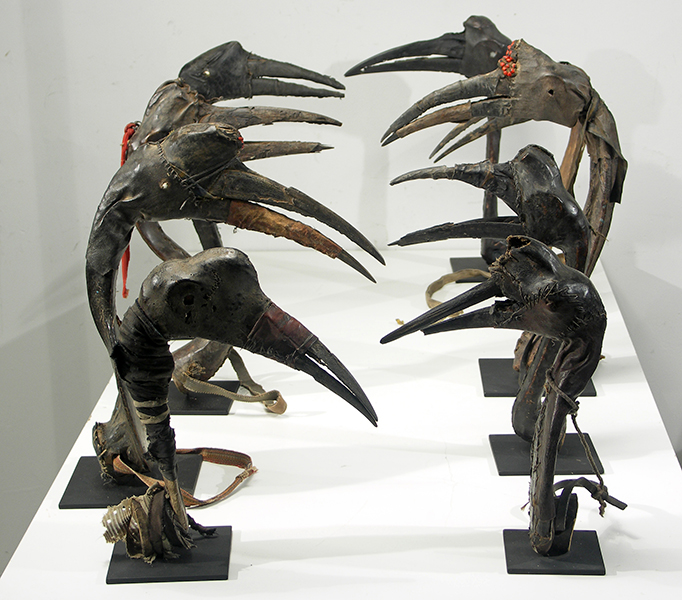

|
|
|
|
|
|
|
|
|
Photographs © Tim Hamill
N. NIGERIAN, Bird Decoys, Nigeria
These decoys have been vetted as authentic with signs of use and age. Most (except for Decoy 7) incorporate an actual bird skull and beak. All (except for Decoy 8) are covered partially in leather and (except for Decoy 4) have a full or partial strap to fasten the decoy onto the hunter's head.
There are animal costumes which help hunters approach their prey unnoticed until it is in range of arrow shot.
Hunting masks have a practical use and their wearing is functionally determined. In contrast to the symbolic suggestions of ritual masks, these animal masks worn by hunters are as naturalistic as possible. But they also have supernatural functions. Firstly by imitating the prey the hunter becomes one with it, allowing him to impose his will on the creature he stalks. Secondly by using the powers of the local medicine man to credit the mask with supernatural or magical powers, use of the fetish was an active way of attempting to influence the outcome of the hunt.
The Hausa and the Nupe live in central and northern Nigeria and Niger in an area of savannah. Before major communal hunts (bago) the hunters gather wearing a bird head dress over a black cloth or goatskin. The head dress is constructed from a wooden core covered with antelope skin and with a padded forehead stump. The mask is held in place on the head by a leather thong through the padded base and a cloth strap around the neck, this way it maintains an upright position as the hunter moves through the savannah.
Sources:
1.African Masks of the Barbier Mueller Collection. Prestel Verlag Munich. 1998.
2.Masks of Black Africa. Ladislas Segy. 1976.
Index by |
Index by |